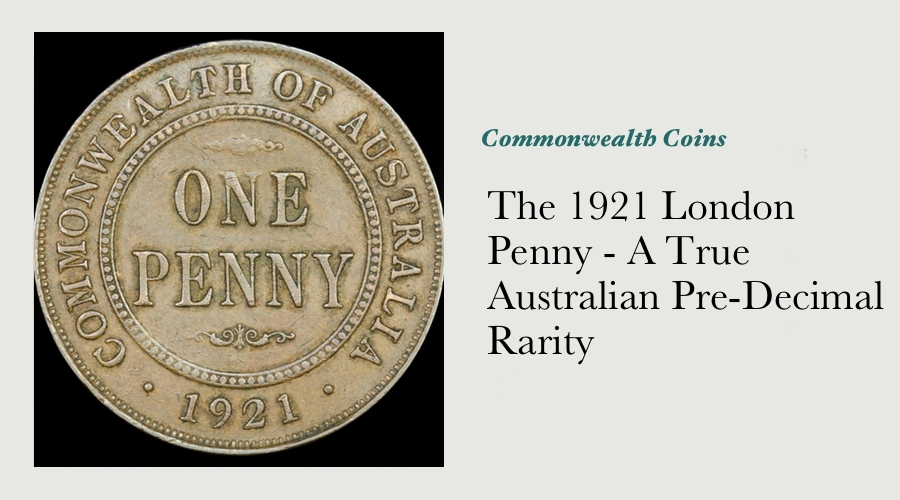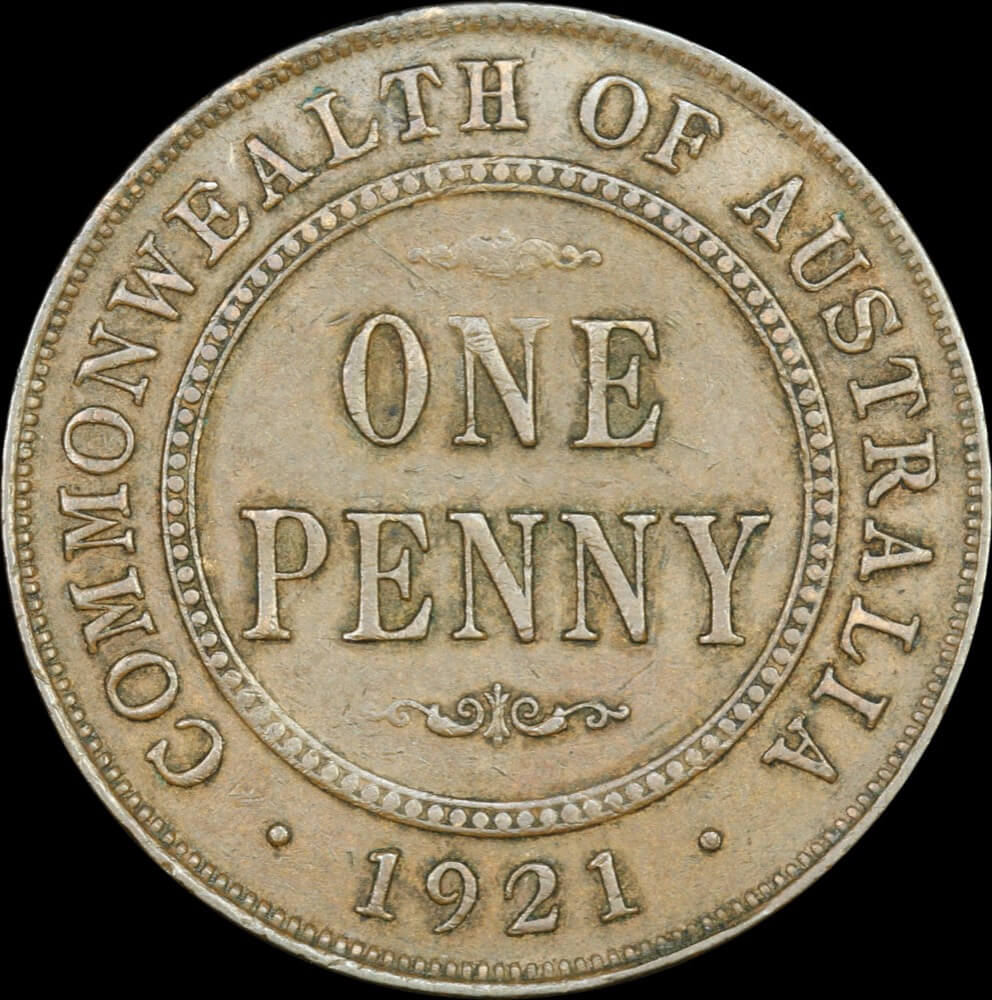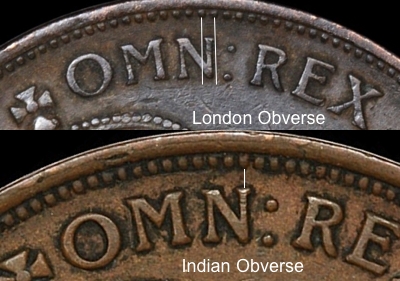The 1921 London Penny - A True Australian Pre-Decimal Rarity

The 1921 penny struck with the “London” obverse die is unanimously rated as amongst the rarest of all penny varieties – it's rare even in heavily worn condition, and is truly rare in mint state.
Here's a brief explanation of the reason for the rarity of this keenly sought Commonwealth coin:

When pence were first minted in Australia, the master dies were supplied from the Royal Mint at London, and also by the Calcutta Mint in India. All pence minted in Australia in 1919 were struck from the London die, however in 1920 the Indian die was used at both the Melbourne and Sydney mints for the first time. Both the Indian and London obverse dies were used between 1920 and 1931, and from 1932 to 1936 the London die was used exclusively.
Indian obverse penny dies were first put into use in Australia at the Sydney Mint on October 6th, 1920. These tools and dies were requested by Melbourne Mint staff in the middle of 1920, and arrived in the middle of August 1920. The dies were then finished and hardened, and 17 pairs were sent up to Sydney in time for the ceremonial first striking of pence there on October 6th 1920.
Although the Sydney Mint received two further batches of penny dies during 1920, it's known that none of them were reverse dies dated 1921. The Sydney Mint produced 146,160 pennies in January 1921, however all these would have been dated 1920 and and would have featured the Indian obverse.
John Sharples states that based on his research through the Melbourne Mint archives, “On 2 August 1921 the master tools supplied from Calcutta in 1920 were destroyed at Melbourne.” In another NAA article, John Sharples also states that “....the London master tools came into use at Melbourne towards the end of 1921.”
Mintage figures for the 1921 penny vary depending on the source consulted, however if the Renniks figure of 7,438,320 is accepted as being reasonably accurate, the best explanation for the rarity of the 1921 London penny is that the vast majority of pennies struck at the Melbourne Mint throughout 1921 featured the Indian obverse. It's quite likely that the London obverse die was only introduced towards the very last days of penny production, explaining why only an extremely small number were struck with that die combination.
Further research into the archives of the Melbourne Mint will no doubt shed light on the exact dates of production of this truly rare Australian pre-decimal coin, and the number that were struck.
As the sophistication of Commonwealth coin collectors increases over time, there is little doubt that there will come a day when two or more well-heeled collectors will continue drive the market value of the rarest penny varieties such as the 1921 London to new levels. A mint-state 1920 plain penny has made $50,000 at auction in recent years, while a Choice Unc 1933/2 overdate penny coming up at auction later this month has an estimate of no less than $11,000!
How Do We Tell the Difference Between the London and Indian Obverses?
A really quick guide to the difference between these two obverse varieties can be seen in the image below. Yes, you'll probably need a magnifying glass to be able to check your coins!

The easiest way to tell the difference between the two obverse varieties is to check how the upstroke in the "N" of "OMN" lines up with the denticles around the edge of the coin.
Indian Obverse: the upstroke in the "N" of "OMN" lines up with a denticle;
London Obverse: the upstroke in the "N" of "OMN" falls between two denticles.
So Just What Are They Worth?
It's thing to have a rare coin, it's quite another to have a valuable coin - buyers for some rare coins can be rarer than the coins themselves, so it is unfortunately quite possible to have a rare coin that there is limited demand for, and has a relatively low market value.
eBay is one place that has Australian penny varieties advertised on it, if you'd like to check what a range of 1921 pennies have sold for recently, click this link.